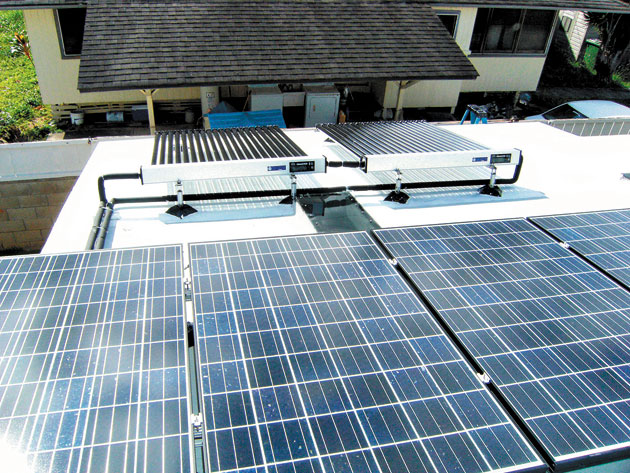Recently, articles have been published detailing the performance factors that cause PV modules to underperform, including a New York Times article, “Solar Industry Anxious Over Defective Panels.” These articles discuss the growing concern over the quality of PV modules and the installation practices that effect the actual energy production of these modules. These poor quality issues are being observed and reported to the extent that there is concern that the public may be unaware of the extent of the problems on what is viewed as a safe investment. Installation practices that cause the modules and inverters to operate at higher temperatures not only lower energy production, but also affect the life of the equipment. The consumer then gets lower-quality modules operating at higher temperatures, which shorten the life expectancy of the equipment and make less energy. Pacific Islands Solar understands that there are differences in the quality of the installation and products used, requiring more information to be provided to the consumer.
Hawaii has one of the toughest environments in the world for solar modules. Systems that are flushed mount to any roof and have less air flow underneath the modules. The modules and inverters can be up to 40 degrees Celsius above the ambient air temperature as a result. For each degree above 25 degrees Celsius, you lose an estimated 0.5 percent of energy production. It causes the micro-inverters to run hotter and the long-term wear on the modules is of concern. Consumers are led to believe that their warranties will protect them if anything goes wrong; the truth is that these documents are written to protect the manufacturer, not the consumer. Generally the consumer never gets to see the warranty until after the purchase. The correct way to mount the modules is at least 8 to 10 inches above the roof to create airflow underneath. Most installations do not follow this practice because it is faster and cheaper to install the modules close to the roof, which isn’t in the best interest of the customer.

Solar modules need to be cleaned and inspected on a yearly basis. Modules at a lower tilt tend to have more soiling, and dirty modules can decrease energy production by up to 0.3 percent.
Quality differences are difficult to apprehend by the consumer since they generally only see brochures or know a friend who has purchased a similar system. As most systems are only a couple of years old, problems with solar modules are only now starting to be realized. Pacific Islands Solar have inspected a number of these modules and find inferior construction details such as thinner frames or glass, poor quality junction boxes with low quality connectors and poor box-to-module sealing.
Pacific Islands Solar has teamed up with Kyocera Solar to concentrate efforts on educating consumers of the difference in quality between the many module manufacturers. As a Kyocera Diamond preferred partner, Pacific Islands Solar has proven to Kyocera that its installation quality matches the Kyocera total quality product delivery. Kyocera maintains quality control over every aspect of the manufacturing process and the results are proven with more than 37 years manufacturing solar modules.
Pacific Islands Solar believes the only way to protect your solar investment is by going with a module manufacturer that has a proven track record of quality and performance.
Pacific Islands Solar offers five years of free maintenance and cleaning with every purchase.
PACIFIC ISLANDS SOLAR
contact // 841-7756
web // Pacificislandsconstruction.net
See more articles from: Pacific Islands Solar